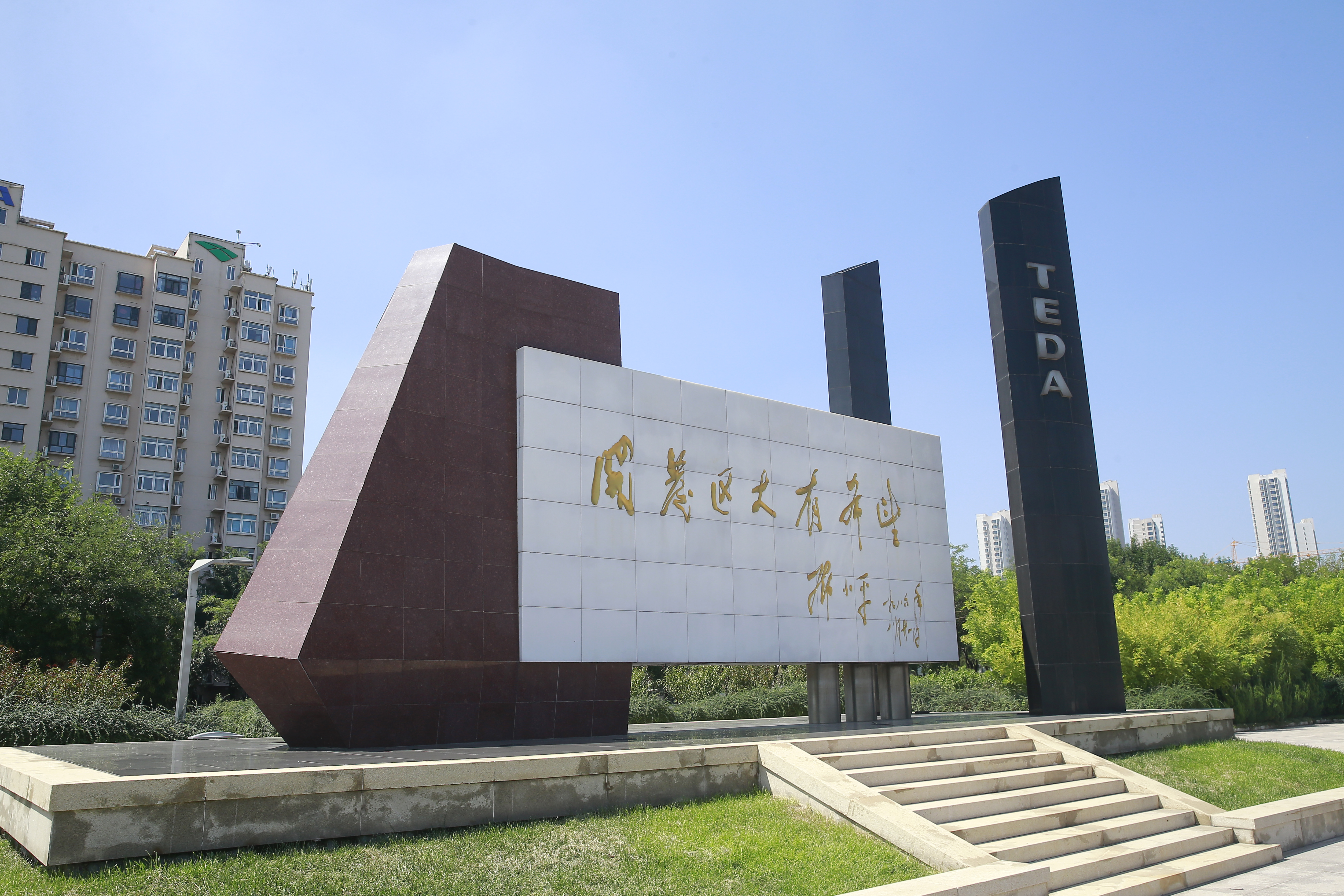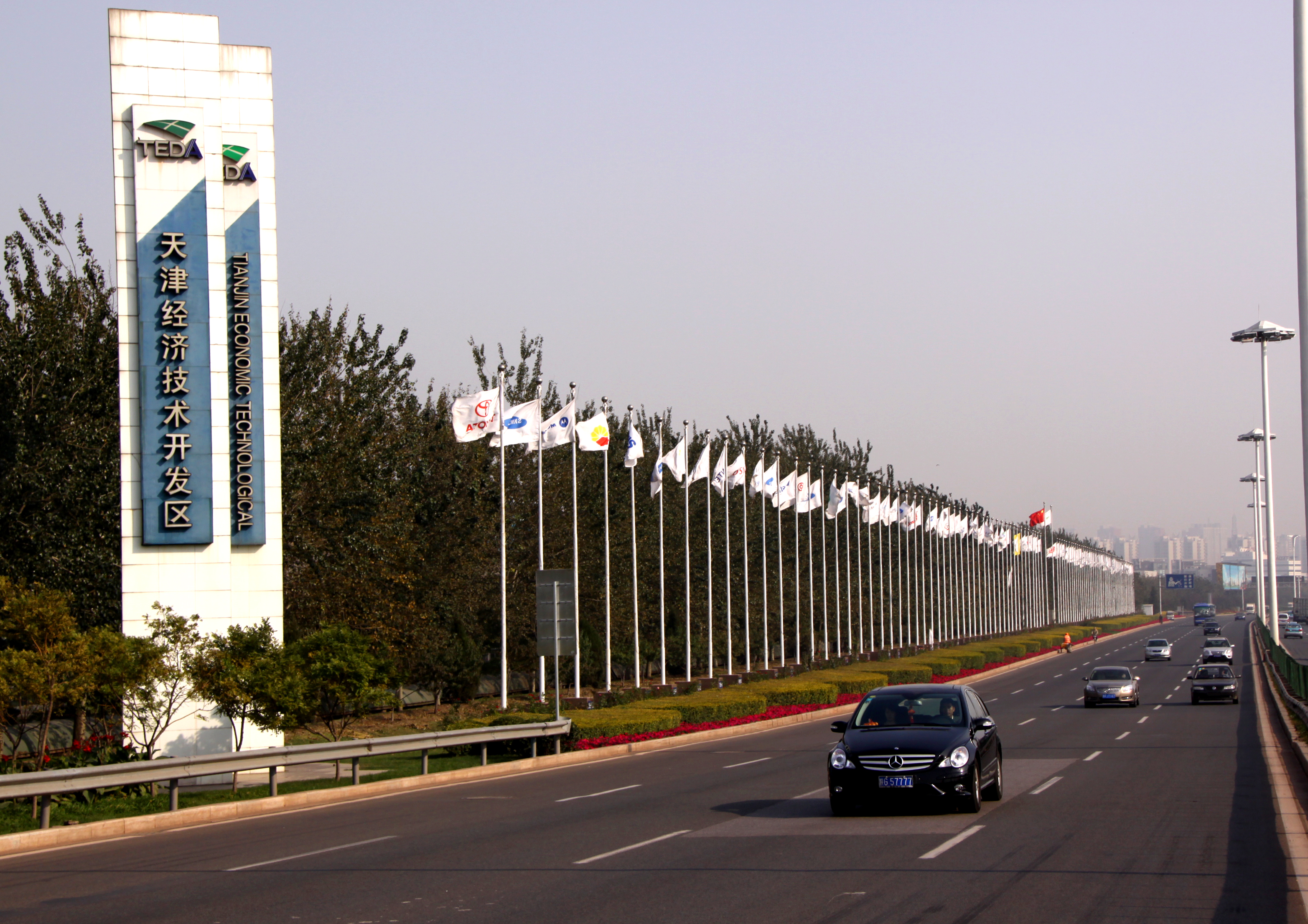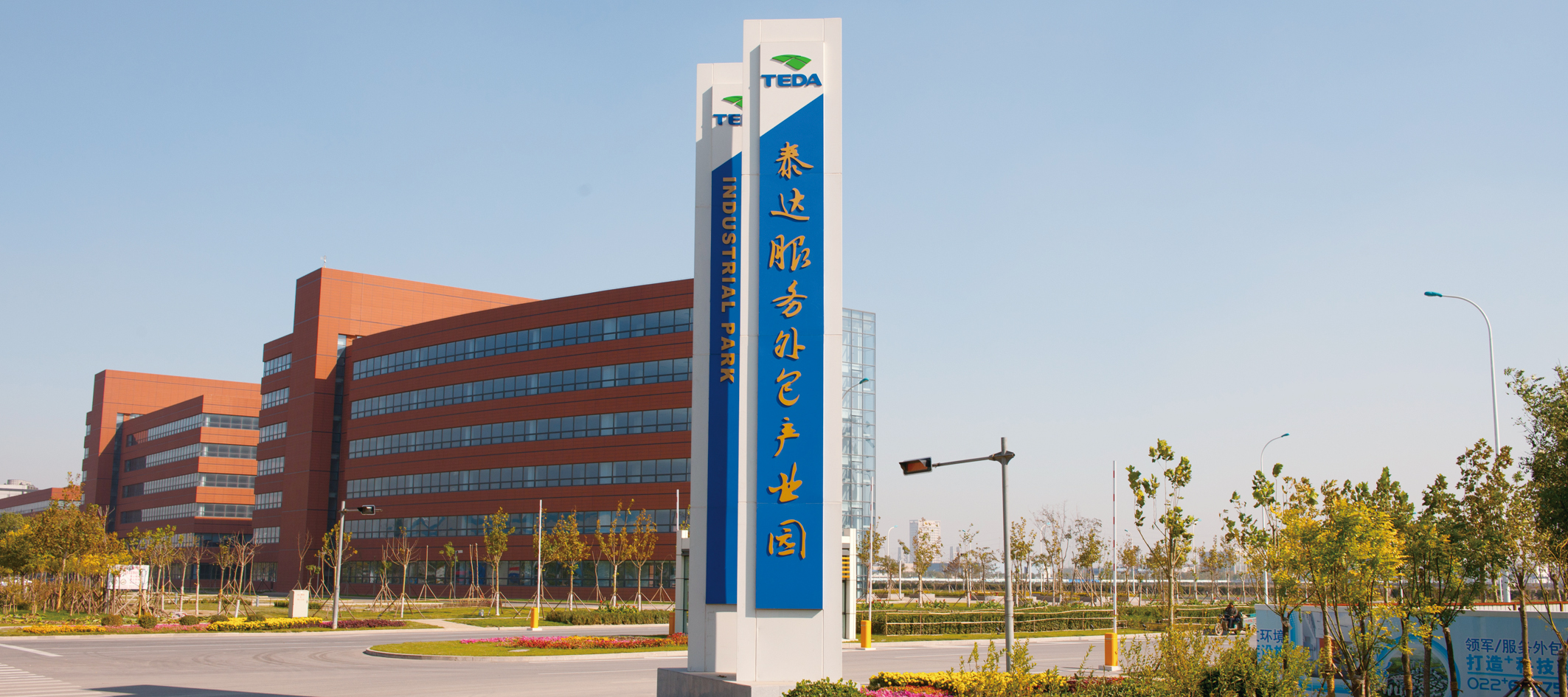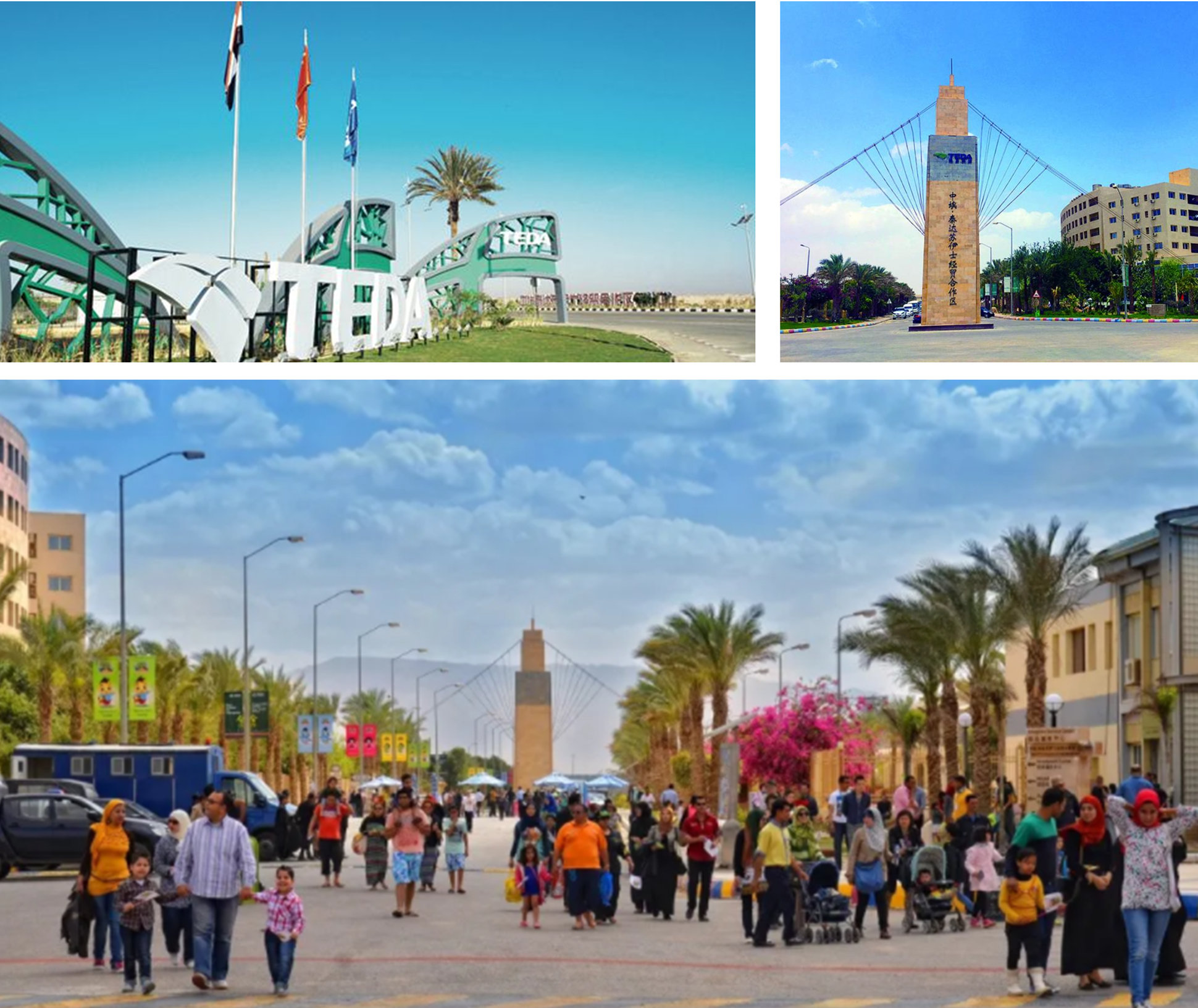Growing with Our Investors—TEDA Takes Great Strides with GDP Crossing the 100-Bln Threshold (2005-2009) (Part I)

On December 8, 2009, the “Pioneer Plow” Memorial Plaza was completed on TEDA Street. The “Pioneer Plow”, the iconic landmark that carries the memories and dreams of TEDA people, was moved to this new location. The inscription “Development zones are of great promise” by Comrade Deng Xiaoping, which was engraved on the monument, inspired generations of TEDA people to strive forward with relentless effort. During 2005-2009, TEDA witnessed remarkable growth and developed into China’s best national-level development zone in terms of economic aggregate, comprehensive investment environment, and globalization level.


Entering the new millennium, with its favorable business environment and industrial foundation, TEDA became a hot spot for numerous multinational corporations to make investments. Its economic strength moved up to a new level in this period. In 2005, TEDA’s GDP reached 64.2 billion yuan, more than a double increase of that in 2000. In 2006, TEDA embraced new opportunities as the development and opening-up of the Tianjin Binhai New Area upgraded into a national development strategy. TEDA witnessed its overall economic scale reach another magnitude. In 2008, the total GDP in TEDA hit 106.5 billion yuan, a milestone that marks the first time for its GDP to cross the 100-billion-yuan threshold. Such rapid economic expansion attracted more domestic and foreign enterprises, thereby significantly uplifting the quantity and quality of investment projects. TEDA’s economy kept on growing thanks to these investors. In such a virtuous cycle, TEDA achieved leapfrog development. By 2009, TEDA has been ranking top in the Ministry of Commerce’s comprehensive evaluation of investment environment among all national-level development zones for 12 consecutive years. Its regional influence and strong appeal to investors were simply self-evident.

By the end of 2009, TEDA has cumulatively attracted more than 10,000 domestic and foreign investors, with over 4,700 foreign investment projects from 74 countries and regions and nearly 160 projects from 76 Fortune Global 500 companies. These top global enterprises not only invested large sums in TEDA but also introduced world-class technologies, advanced management philosophies, and professional talents across various fields, playing an irreplaceable role in upgrading Tianjin’s traditional industries. TEDA’s capital structure has also quietly transformed from being dominated by foreign investment to a balanced mix of foreign, state-owned, and private capital.
As China’s best development zone and a role model for high-level export-oriented economies, TEDA soon became a popular venue for major economic forums and various conferences. In June 2005, the 6th ASEM Finance Ministers’ Meeting was held in TEDA. Pertti Rauhio, the then State Secretary of Finland, praised TEDA, “It is so beautiful, like a garden; it’s hard to imagine it was once a saline wasteland.” Subsequently, the second Summer Davos Forum, the International Forum on Chinese Automotive Industry Development (also known as the TEDA Auto Forum), and other events with first-class domestic and international influence came to TEDA. While welcoming guests from around the world, TEDA unveiled a vibrant new chapter of prosperity and development and demonstrated its robust economic momentum.


For more than two decades, various industries in TEDA has been growing constantly with industry categories expanding to eight major sectors, namely, automotive, electronics & telecommunications, equipment manufacturing, biopharmaceuticals, petrochemicals, food and beverages, aerospace, and new energy and materials. Industrial structure has become more balanced and resilient, making TEDA an important hub for advanced manufacturing and R&D commercialization in the Tianjin Binhai New Area. In the electronics & telecommunications sector, Motorola’s localization in TEDA saw more progress with the establishment of Motorola (China) Finance Co., Ltd. and the Tianjin Branch of Motorola China Research and Development Institute. TEDA’s significance was further elevated in Motorola’s global strategic layout. Meanwhile, many other global industry giants like Honeywell and ROHM Semiconductor settled down one after another. TEDA maintained its position as a front-runner in electronics & telecommunications industry nationwide. In the automotive sector, following the settlement of FAW Toyota and relevant suppliers, automobile manufacturers and auto part companies such as Great Wall Motors (GWM), Continental Automotive Systems (CAS), Grammer Interior Components, and Kumho Tires also established operations here, contributing to TEDA’s ever-expanding automotive industry cluster. Entering the 21st century, as China implemented a series of supportive policies for equipment manufacturing, the industry entered a new growth phase in TEDA. Leveraging advantages in ports, logistics, industries, and policies, TEDA attracted global leaders like Otis, Vestas, SEW, and John Deere, as well as domestic giants like CNPC Bohai Equipment and Dongfang Electric. Moreover, projects such as Nestlé Purina’s first pet food factory in China, Novo Nordisk’s expansion of Tianjin production plant, and Novozymes (China)’s experimental factory were launched. Construction of the Tianjin industrial base for next-gen carrier rocket picked up speed. These “big trees” in various sectors has taken root and thrived thanks to TEDA’s fertile soil for investment.
A single tree does not make a forest. While the investment achievements of industry giants were impressive, creating new investment environment at a higher level and enhancing TEDA’s attractiveness to capital externally and competitiveness internally requires more efforts in fostering and introducing more high-quality enterprises. Solid industrial foundation is the precondition for an “industrial forest” to thrive. During this period, TEDA released a series of policies and measures to promote high-tech industries, and stepped up support for independent innovation, research commercialization, expanding financing channels, and intellectual property applications. By 2008, TEDA’s cumulative investment in technological innovation reached 1.98 billion yuan, boasting 12 incubators of various types, 255 incubated enterprises, and 28 engineering research centers. Moreover, TEDA proactively accelerated the construction of platforms such as the National SuperComputer Center in Tianjin and the Tianjin International Joint Academy of Biomedicine. It fostered technological innovative enterprises like Asymchem, Motech, Cenway Pharmaceuticals, Qingyuan Electric Vehicles (QYEV), and GreenBio Materials. The output value of high-tech products accounted for 53.6% of TEDA’s total industrial output in 2008.

While core manufacturing competencies improved, TEDA also put more energy into high-value-added modern service industries. TEDA’s modern service industry of this period mainly featured integrated growth of manufacturing and service sectors with solid manufacturing industries as basis and producer services as a highlight. In 2009, the TEDA Service Outsourcing Industrial Park was put into use, offering an information, policy, scale aggregation, and resource-sharing platform for enterprises. Meanwhile, innovative financial business patterns represented by funds, financial leasing, and commercial factoring also flourished in the area. Globally influential banks like Standard Chartered, HSBC, and Citibank moved in, while renowned financial companies such as Home Credit set up branches in TEDA. The Binhai International Factoring Center, China’s first international factoring institution, was launched in TEDA, providing specialized factoring services to local businesses and extending its reach across the Bohai Economic Rim. All these achievements exemplified the vibrant development of TEDA’s modern services.

TEDA has been committed to “going global” on a high level while promoting high-quality FDI attraction. In 2008, TEDA partnered with Egypt to establish the China-Egypt TEDA Suez Economic and Trade Cooperation Zone (SETC-Zone). Located on the arid plateau at the southern end of the Suez Canal, the SETC-Zone is adjacent to the Suez Canal and faces the Red Sea in the east, just 2 kilometers from Egypt’s third largest port Ain Sokhna, and over 120 kilometers from Cairo. Its geographical and geological characteristics are remarkably similar to those of TEDA. TEDA transplanted its philosophies such as close interaction between development companies and government agencies as well as the integration of industry and urban development into this oversea pilot area. The “TEDA Model” was successfully replicated in this cooperation zone.

The China-Egypt TEDA Suez Economic and Trade Cooperation Zone was jointly funded by Tianjin TEDA Investment Holding Co., Ltd. and the China-Africa Development Fund. It has transformed since its inception in 2008 from a barren expanse of desert into Egypt’s most business-friendly industrial park in terms of comprehensive investment environment, investment density, output per unit, and number of China-funded enterprises. The cooperation zone not only provides a platform for Chinese companies to grow but is also attracting investments from more countries and regions. As of now, over 170 enterprises have settled in the zone, creating about 70,000 jobs. The SETC-Zone has become one of the flagship projects of the Belt and Road Initiative.
“Chinese enterprises face various risks and challenges as they go global. The cooperation zone serves as an excellent platform for collective overseas expansion and clustered development. It makes Chinese enterprises more resilient against risks,” said Hu Hao, the then General Manager of TEDA Investment Holding. “‘TEDA’ represents not just a company or a zone, but a development model.” Investments, technologies, and development experiences from China are nourishing the industrialization and development of African countries.

On December 8, 2009, TEDA held a commemorative conference for its 25th anniversary. A new logo was unveiled at the conference. The logo, consisting of a graphic and the letters “TEDA” (the abbreviation of Tianjin Economic-Technological Development Area), vividly showcases TEDA’s image of vitality, openness, inclusiveness, competitiveness, and efficiency. It is still in use today. TEDA, a front-runner of reform and opening-up and a role model for comprehensive economic and social development, is marching ahead on its path of shaping a “TEDA” model for all national-level development zones.












 津公网安备 12019002000128号
津公网安备 12019002000128号

